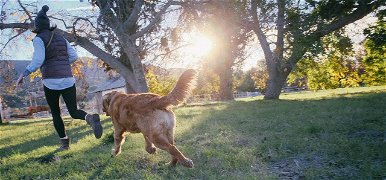Aviation is one of humanity's greatest inventions, and in the first half of the twentieth century there were many pioneers of this revolution in transportation. Many people have taken a big trip alone or with several other people, and they dream of daring. Among these pioneering adventurers was Amelia Earhart, who was the first woman to fly solo across the Atlantic Ocean.
He carried out the historic mission in 1932.
But the end of Amelia Earhart's life remained an eternal mystery, because after she attempted to orbit the Earth, she never returned home. The journey never ended, as Amelia disappeared, with only a final voice message remaining, and the wreckage of her crashed plane never to be found. The US Navy searched for him for a very long time, spending $4 million on the search, which ended with no trace of experts being found.

Why does your dog follow you everywhere?
Read more…
Read more…
But the search is not over yet.
They continue this even in 2024, but not the Navy anymore.
A surprising number of theories have emerged about what may have happened to him, from Japanese captivity to… Palm thieves (coconut crab) Which is known to be a carnivore. Incidentally, they are also the largest crabs on Earth. Larger bones have been found scattered on Nikumaroro Island, and traces of Earhart's plane have also been found nearby.
Nikumaroro is also famous for the large number of coconut crabs that live on the island. The crab is known to hunt seagulls, among other things, and can crack whole coconuts. Crabs also hunt in swarms under the cover of night.
Experts and scientists took the theory seriously and thought it was possible to start experimenting with where crabs take their prey after catching it. It was proven that these people were in their holes. Later, scientists returned to the site with search dogs, and the dogs allegedly smelled a scent, but in the end, no conclusive evidence was found about what might have been the fate of one of the aviation pioneers.
The search for Amelia Earhart continues in the Pacific Ocean.
What does coconut crab look like?
(via IFL Science)






